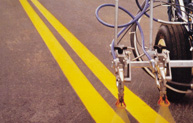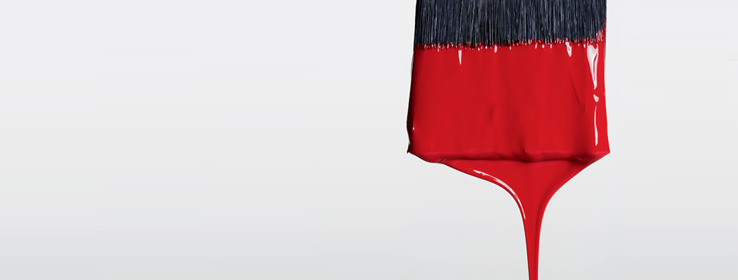Why use primer (and top-quality primer, at that) rather than just applying an extra coat of paint? Because using multiple coats of paint alone can do more harm than good.
Why is primer better than plain old paint?
Primer is specially formulated to make sure the top coat of paint adheres to the surface below, creating the best-looking, longest-lasting finish. Primers are engineered for aggressive filling and binding with underlying surfaces. If your client's top coat of paint begins peeling or soaks unevenly into the surface because you didn't specify using a primer, you're back to square one – or worse.
Priming wood
The porous nature of bare wood makes the use of primer a necessity. If finish-quality paint is applied directly to bare wood, the wood can absorb the paint's solvents, drying it prematurely. Rapid drying can cause a host of quality problems – the chemical reactions that occur during the curing process cannot be rushed. For example, latex and alkyd-based paints actually polymerize (or form long chains of three-dimensional structures). Quick absorption can disrupt this process, creating a weak paint that's prone to cracking and chipping.
And remember, all varieties of bare wood have some sort of color. Without a primer, several layers of paint may be necessary to obscure the wood grain and ensure even, uniform color. Proper use of primer also protects wood from warping, mildew and other water damage. Thin layers of paint are water-permeable, and the wood below can still be affected by moisture.
Priming metal
While not all metals require priming, it's highly recommended if the metal will be exposed to moisture. Oxidation (or rust) begins the very instant water contacts bare metal. To combat oxidation, metal primers often contain anti-corrosion agents, such as zinc.
Sometimes, it's necessary to paint a metal surface that's in less-than-perfect condition. If the surface is rusty, the best course of action is to thoroughly clean the metal and remove the rust – but that's not always possible. Instead, special primers that chemically convert rust to solid metal salts are a good option. The surface may not be as good as shiny, clean metal, but it's a lot better to paint than a rusty surface that will eventually just rust through.
You can prime and paint plastic
The most common reason to prime a plastic surface is to make a drastic color change. Primers reduce the layers of paint necessary to completely cover previous colors, and will help the paint make a thorough bond with the surface being painted. Some paints and primers designed for painting plastics are not water-based. Be very careful to ensure that the primer's propellant or solvent will not dissolve or warp the plastic being painted. Test both primer and paint on a small hidden spot of the surface you intend to paint.
Sherwin-Williams Color Prime® System
If the palette you're recommending for your client's project includes bold, deep, vivid or transparent hues, consider using Sherwin-Williams Color Prime System of gray-shaded primers.
The Sherwin-Williams exclusive Color Prime System is a continuum of gray shades that starts at light gray (P1) and gradually deepens to P6, or the darkest gray. This technology is based on how color pigment scatters and absorbs light. If a gray shade primer is recommended, the P code appears on the back of the color chip.
A primer tinted to the recommended shade of gray creates the ideal balance of light absorption and scattering to achieve the correct color in fewer coats. By working inside the color space of the topcoat color, the right basecoat shade allows the topcoat to more fully and more quickly develop its true color.
Bottom line: You'll achieve true color faster and easier. And, you'll reduce the chances of hearing your client complain about the color on the wall not matching the color of the chip. To learn more about the Color Prime System, visit your local Sherwin-Williams store, contact your Sherwin-Williams representative or call the Architect and Designer Answerline at (800) 321-8194.
When schedules and budgets are tight, it can be tempting to skip a step such as having your painters properly apply primer. But the immediate impact on quality and the long-range consequences make using a primer an integral first step to getting a great-looking finish coat and beautiful, long-lasting results both you and your client can feel confident about for years to come.







